It’s hard to believe now but right up to the late 1970s parts of Ireland were still in the dark, awaiting the arrival of rural electrification.
The roll out of this essential infrastructure began in 1946 with the first lights being turned on in Killsallaghan, north Dublin on 5 November 1946. The work would continue until the late 1970s when the lights were turned on in the Black Valley, Co Kerry, the last of the 792 areas to be connected.
This huge investment in essential infrastructure began as Great Britain emerged from war and building materials were scarce as that country set about rebuilding its own infrastructure. The ESB imported over 1m poles from Poland and by the time their work was complete, crews had unfurled a massive 165,000km of cable – the equivalent of winding it four times around the equator. The work was back-breaking, mostly done with nothing other than the picks, shovels and bare hands of the crews.
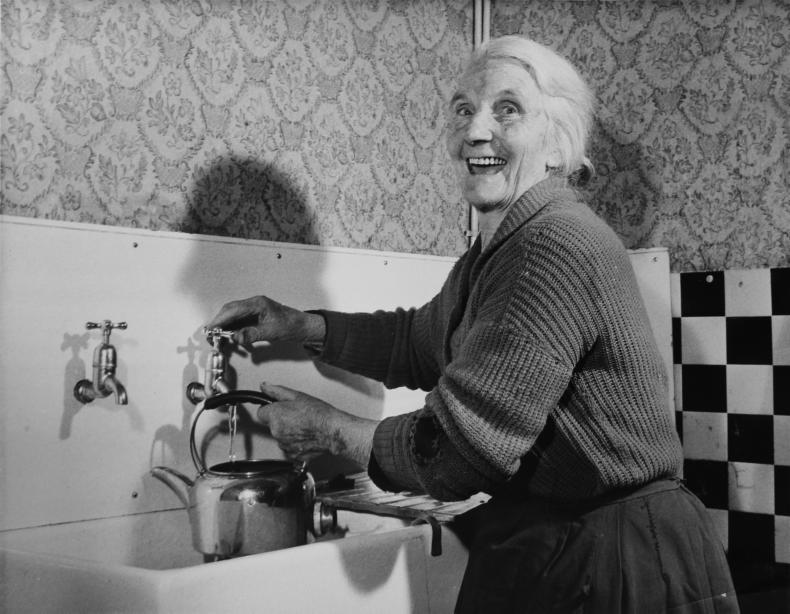
Mrs Ellen Scannell gets running water in her kitchen at Lissivigeen, Co Kerry, in April 1962.
But it wasn’t all plain sailing as this “newfangled” light was met with skepticism in some parts and people had to be convinced to get connected. According to Deirdre McParland, senior archivist with the Museum of Country Life, electricity was a relatively new concept, people were self-sufficient and didn’t have monthly bills to pay and weren’t inclined to sign up.
Women power
This is where women and the Irish Countrywomens’ Association (ICA) in particular, played an essential role in ensuring a solid take-up of the new scheme. The head of the ESB Pat O’Doherty encapsulates the mood with stories he heard from crew members.
“At local dances it became a topic of conversation where men realised the importance of electricity because they saw how interested women were in it. The woman would ask the farmer as they danced, ‘Have you got the electric in?’ If he said no then she would quickly move on. The men came to realise it was a bit of a selling point if they had it. Without it, they were unlikely to get the second dance!”

Electric kettles were popular sellers.
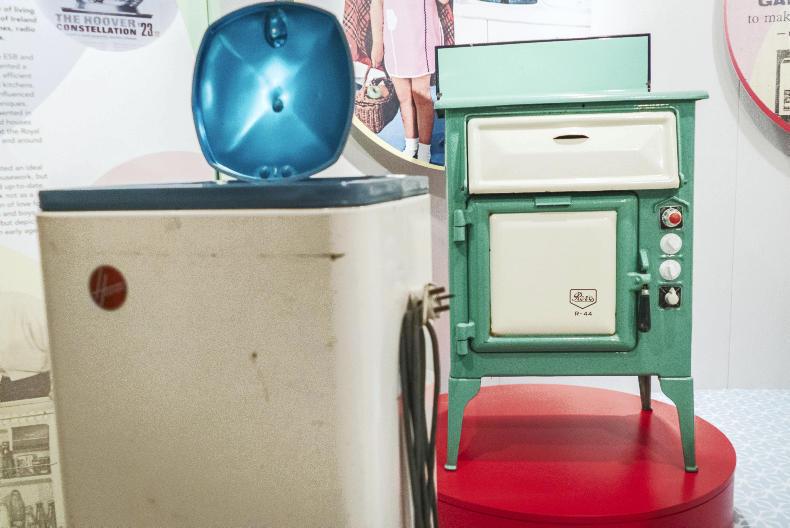
Popular appliances.
Now an exhibition honouring the role of women and their experiences of rural electrification is on display at the Museum of Country Life, Turlough Park, Castlebar. Kitchen Power – women’s experience of rural electrification celebrates the undocumented role of women who campaigned vigorously for the introduction of rural electrification. It was the voluntary effort of these women in convincing their reluctant neighbours to sign up that hastened the introduction of the scheme for everyone.
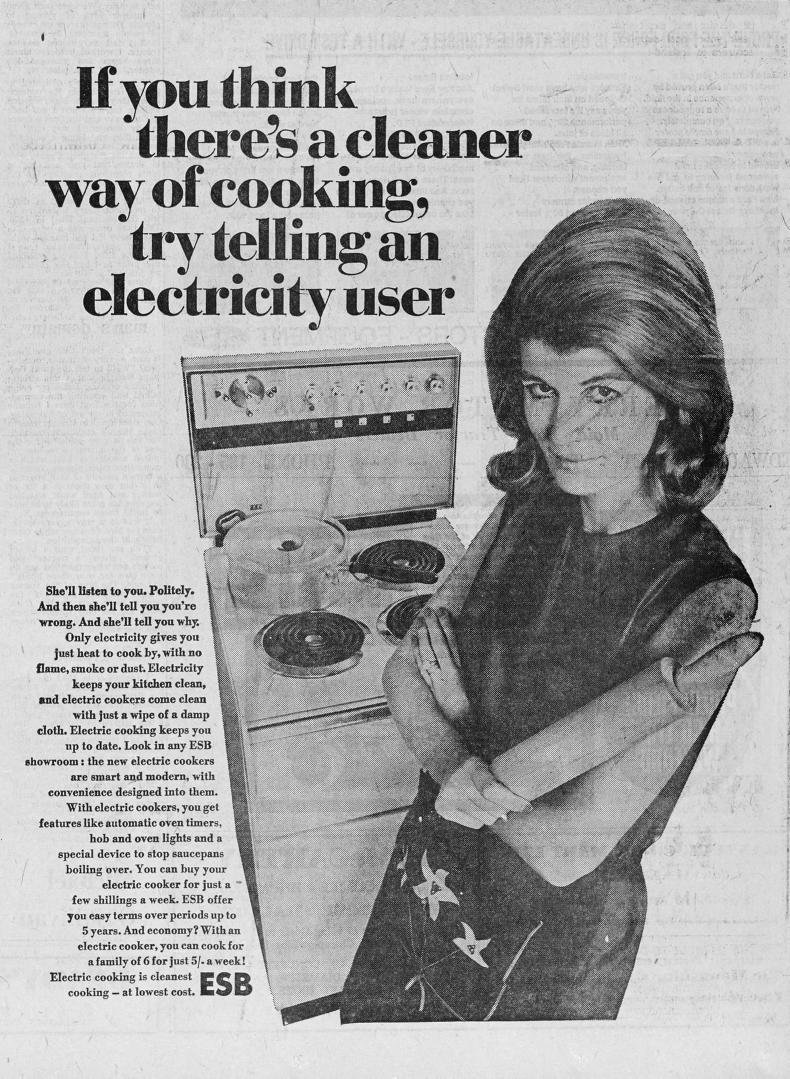
ESB archive from The Kerryman, 1968.

Former President Mary Robinson's opening.
Defeat drudgery
From the off women recognised the power of electricity, the power it would give them to end the drudgery that was a stark reality of their everyday lives. While electricity would provide light it would also introduce household items such as washing machines, electric kettles and irons. Teams of ESB lady demonstrators toured the country demonstrating how to get the most out of these new appliances. Kettles and irons were best sellers. The era of white goods had begun.
Rural women would never look back and electricity would transform their lives.

Where old and new Ireland meet. Outdoor demonstration July 1957.

ESB salesman demonstrating appliances in Mullingar, May 1954.
Entry to the exhibition, which runs to December, is free and a full programme of events will run alongside it. Contact 094-903 1751 or tpark@museum.ie for more. The eircode is F23HY31. In addition, the National Museum of Ireland would love people to submit their stories about rural electrification to the Our Irish Heritage website, www.ouririshheritage.org. If you plan to visit the exhibition a nice companion to it would be Then There Was Light co-edited by PJ Cunningham and Dr Joe Kearney (€14.99) – stories behind the installation of Ireland’s rural electrification scheme.
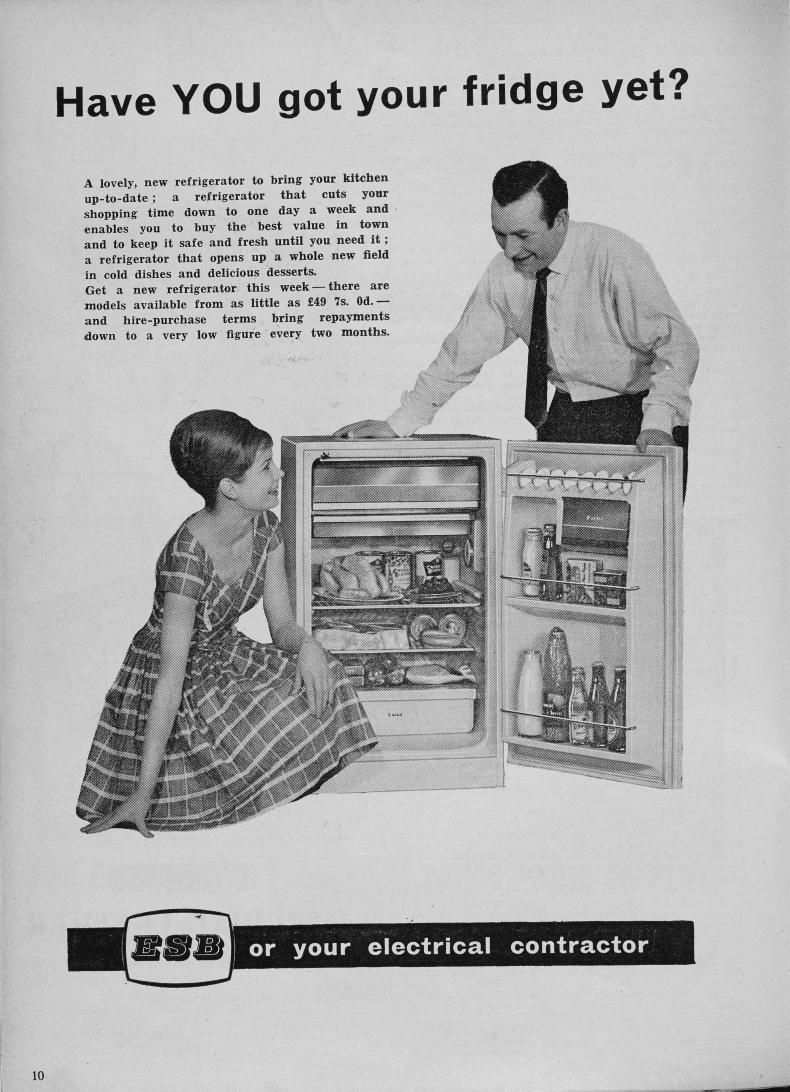
Advert in Woman's Way from May, 1964.
It’s hard to believe now but right up to the late 1970s parts of Ireland were still in the dark, awaiting the arrival of rural electrification.
The roll out of this essential infrastructure began in 1946 with the first lights being turned on in Killsallaghan, north Dublin on 5 November 1946. The work would continue until the late 1970s when the lights were turned on in the Black Valley, Co Kerry, the last of the 792 areas to be connected.
This huge investment in essential infrastructure began as Great Britain emerged from war and building materials were scarce as that country set about rebuilding its own infrastructure. The ESB imported over 1m poles from Poland and by the time their work was complete, crews had unfurled a massive 165,000km of cable – the equivalent of winding it four times around the equator. The work was back-breaking, mostly done with nothing other than the picks, shovels and bare hands of the crews.

Mrs Ellen Scannell gets running water in her kitchen at Lissivigeen, Co Kerry, in April 1962.
But it wasn’t all plain sailing as this “newfangled” light was met with skepticism in some parts and people had to be convinced to get connected. According to Deirdre McParland, senior archivist with the Museum of Country Life, electricity was a relatively new concept, people were self-sufficient and didn’t have monthly bills to pay and weren’t inclined to sign up.
Women power
This is where women and the Irish Countrywomens’ Association (ICA) in particular, played an essential role in ensuring a solid take-up of the new scheme. The head of the ESB Pat O’Doherty encapsulates the mood with stories he heard from crew members.
“At local dances it became a topic of conversation where men realised the importance of electricity because they saw how interested women were in it. The woman would ask the farmer as they danced, ‘Have you got the electric in?’ If he said no then she would quickly move on. The men came to realise it was a bit of a selling point if they had it. Without it, they were unlikely to get the second dance!”

Electric kettles were popular sellers.

Popular appliances.
Now an exhibition honouring the role of women and their experiences of rural electrification is on display at the Museum of Country Life, Turlough Park, Castlebar. Kitchen Power – women’s experience of rural electrification celebrates the undocumented role of women who campaigned vigorously for the introduction of rural electrification. It was the voluntary effort of these women in convincing their reluctant neighbours to sign up that hastened the introduction of the scheme for everyone.

ESB archive from The Kerryman, 1968.

Former President Mary Robinson's opening.
Defeat drudgery
From the off women recognised the power of electricity, the power it would give them to end the drudgery that was a stark reality of their everyday lives. While electricity would provide light it would also introduce household items such as washing machines, electric kettles and irons. Teams of ESB lady demonstrators toured the country demonstrating how to get the most out of these new appliances. Kettles and irons were best sellers. The era of white goods had begun.
Rural women would never look back and electricity would transform their lives.

Where old and new Ireland meet. Outdoor demonstration July 1957.

ESB salesman demonstrating appliances in Mullingar, May 1954.
Entry to the exhibition, which runs to December, is free and a full programme of events will run alongside it. Contact 094-903 1751 or tpark@museum.ie for more. The eircode is F23HY31. In addition, the National Museum of Ireland would love people to submit their stories about rural electrification to the Our Irish Heritage website, www.ouririshheritage.org. If you plan to visit the exhibition a nice companion to it would be Then There Was Light co-edited by PJ Cunningham and Dr Joe Kearney (€14.99) – stories behind the installation of Ireland’s rural electrification scheme.

Advert in Woman's Way from May, 1964.









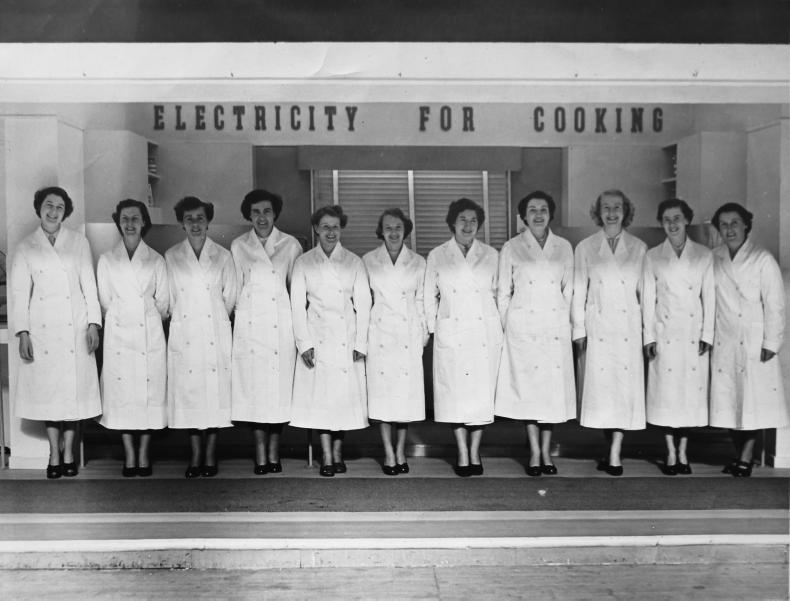




 This is a subscriber-only article
This is a subscriber-only article









SHARING OPTIONS: